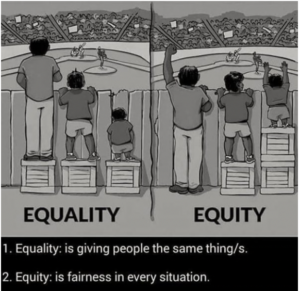In EDCI 335: Learning Design for Technology-Mediated Environments, my groups members and I have created a learning design blueprint for an interactive learning resource about the water cycle. Our resource is ideal to use with primary students, specifically Grade 2 students.
One important aspect to consider when creating an interactive learning resource is inclusion. Ensuring all students’ needs are being met is a crucial part of facilitating a learning experience.
Our group has considered students who are hard of hearing. Hard of hearing means that the student has some hearing loss but does have some residual hearing. Offering inclusive learning for this includes ensuring the use of subtitles on all videos and audio and the teacher wearing a microphone.
Some areas that we have not considered yet but will include in our interactive learning resource and lesson are:
- Sitting the student at the front of the classroom or near the teacher/area that the teaching/speaking is coming from (Inverso, 2021).
- Minimizing background noise (Inverso, 2021).
- Looking at the student when talking to them (Inverso, 2021).
Our group has also considered students who have colour blindness. Colour blindness can show itself differently in different people, but we are considering the fact that it makes it difficult for students to distinguish colours. Offering inclusive learning for this includes teaching with the use of minimal colour and instead using a lot of black and white ink.
Some areas that we have not considered yet but will include in our interactive learning resource and lesson are:
- Sitting the student in an area with a lot of light (Gavin, 2022).
- “[W]riting out the names of colors if they are relevant to instruction (yellow sun, green frog, etc.)” (Gavin, 2022).
- Labeling supplies that are colour specific such as markers and paint (Gavin, 2022).
When planning a learning experience it is important to remember that all students need something different to succeed. One thing that I would ensure when teaching our interactive learning resource is that students understand that we all have unique needs and just because you may not need something to succeed, that doesn’t mean that someone else doesn’t. This illustration showcased in EdTech Admin (n.d.). from Leigh Blackall, retrieved from https://www.flickr.com/photos/leighblackall/26701766821/ is a great way to show students that we all need different things in order to be at our best:

References
EdTech Admin. (n.d.). Universal design. EDCI 335: Learning design for technology-mediated environments. Retrieved October 20, 2022, from https://edtechuvic.ca/edci335/universal-design/
Gavin, M. L. (2022, January). Color blindness fact sheet (for schools). Kids health. Retrieved October 20, 2022, from https://kidshealth.org/en/parents/color-blind-factsheet.html#:~:text=Ways%20to%20help%20a%20student,labels%20in%20addition%20to%20colors
Inverso, D. (2021, March). Hearing loss fact sheet (for schools). Kids health. Retrieved October 20, 2022, from https://kidshealth.org/en/parents/hearing-factsheet.html
